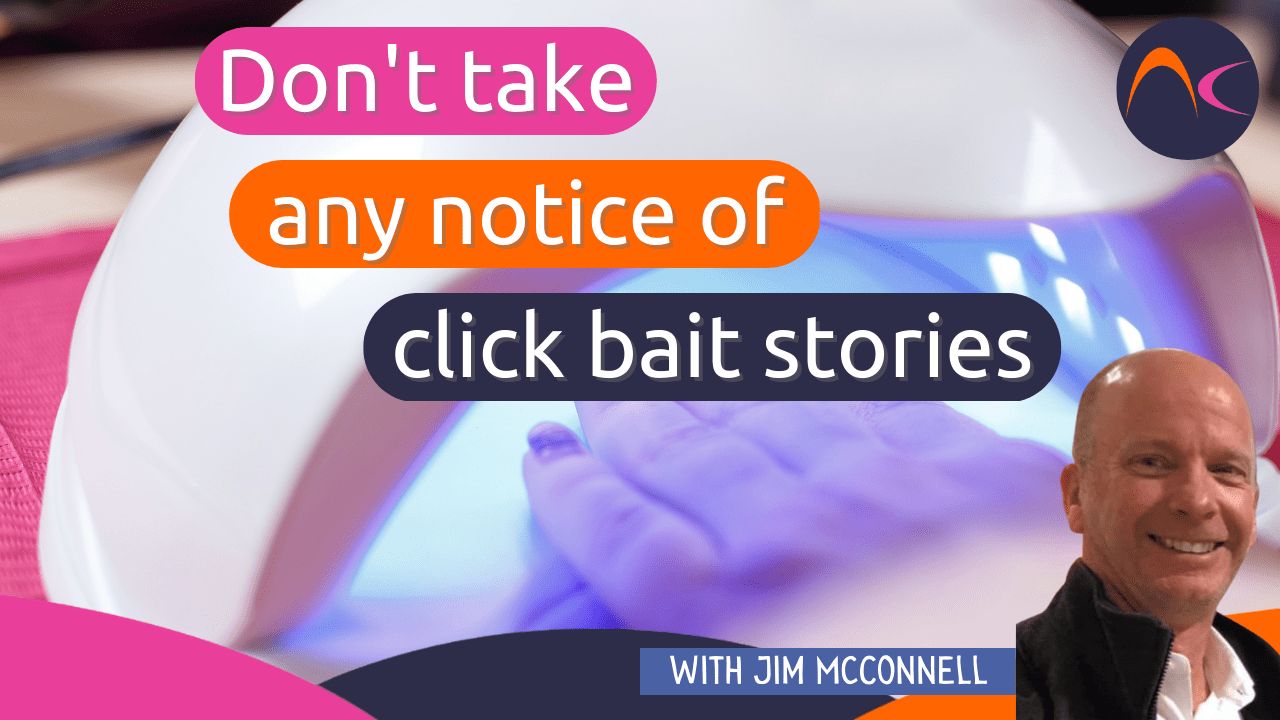Papel para generar miedo en el público
The report from UCSD researchers Zhivagui et. al. published January 17, 2023 tries to accomplish a lot in one report, but it falls short. Reading the report a few times reveals statements that the authors want to create a study that supports their own beliefs that nail curing lights are dangerous. This is not solid, proper, or even decent science. This is a paper to generate fear in the public and directly attacks our industry. It is my impression they feel there is little to no science behind the chemistry and curing technology is used in gel nail products. Let me illuminate my points with a few remarks:
Original Article – Nature Communications
Artículo de Yahoo Life
Dail Mail – Artículo de periódico en línea
1. Los investigadores no proporcionaron suficientes controles y detalles sobre las pruebas en piel real y no en células de piel clonadas en una placa de Petri (con todas las capas dérmicas que se incluirán en la exposición a la fuente de energía). Las capas externas de la piel proporcionan protección a las capas internas, subdérmicas, que tienen más riesgo de formar cáncer.
2. El tiempo de exposición a la fuente de energía es extremo, de 20 minutos por exposición, en comparación con los tiempos de exposición de los salones, de 30-60 segundos por exposición.
a. En el salón: 3-5 exposiciones totalizando el tiempo de exposición de 1,5 a 5 minutos.
b. En el estudio: 2 ó 3 exposiciones con una duración total de 40-60 minutos.
3. The number of 20-minute exposures in a short time frame – 2 exposures in 3 hours or in a different portion of the study, (3) 20-minute exposures over a 3-day period. This would never be done in a salon.
4. No se controla el efecto del calor de la luz de polimerización en las células del ensayo.
5. No se dispone de un espectrógrafo detallado de la irradiancia de la luz de polimerización comprendida entre 280nm y 400nm. La evaluación adecuada de la irradiancia de la luz de polimerización es esencial para evaluar la cantidad de energía que se emitió de 280nm a 400nm.
a. Se utilizó una unidad de prueba UV que probablemente se compró en Amazon para $153.
6. The calculation of energy exposure (pg 9, under “Methods”) assumes that all energy is created equal for its effect on tissue – from 280nm to 400nm. This is certainly NOT the case based on other portions of their study as listed in the report wherein it is notated that UVC and UVB have differing mutagenic effects on the cells.
7. The authors state in their own report that there is insufficient time between exposures to allow the cells to recover from the exposure. Here they are admitting that the study that they designed and conducted is poorly done. Page 9, under “Methods/Cell viability and cytotoxicity assays” the author summarizes (I am paraphrasing) in the paragraph that they chose the worst-case scenario to demonstrate the greatest effect of the UV energy source on the skin cells tested. In short – they admit to creating the worst outcome possible.
8. It is stated in both the report and the article that “future large-scale epidemiological studies are warranted” meaning that these results are generally inconclusive and require more study. It is also stated that it will take “at least a decade to complete” these tests – so 10+ years of work to verify what we already observe in the salon. If their future research is conducted as well as this initial study, they have already formed their opinion and will design further testing to support their unfounded beliefs. Proper research technique is to approach a topic from a neutral stance, designing the experiments to obtain factual and viable data and then objectively analyzing the results to form a conclusion.
En resumen
This report was designed, conducted, and written to support their ideas that nail curing lights are dangerous. In the 23 years that I have been making, testing, and improving gel nail systems, I have never heard of one client or nail technician who has developed skin cancer on their fingers that is a direct result of the curing lights. Moreover, I have not heard of anyone developing skin cancer on their fingers in the 23 years that I have been in this industry. That is not saying that it could not happen, I just have never heard about it nor seen it. If this is the best work that can come out of this lab at UCSD, it is shameful. I have seen more impressively designed experiments from college underclass students than from these post graduate PhD researchers.

